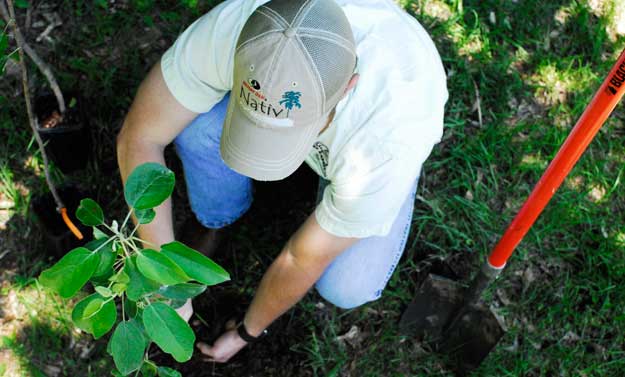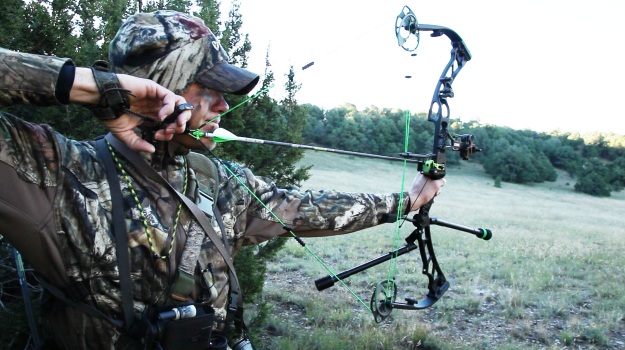
Various mast producing trees such as oaks and fruit trees are a great way to provide additional food to the wildlife on your property in key areas. Keep these tips in mind to ensure success.
Choose the Best Site - There is a reason farmers plant their crops in specific areas. Trees also grow faster and thrive in areas they prefer. When given a choice between planting a tree atop a rocky hilltop or down in a valley or bottom, generally the area that’s lower in elevation will have better growing conditions. A simple way to determine a suitable location is to look around your immediate area at the vegetation that already exists- if you see one particular spot that has taller or greener vegetation, plant your tree there.
Plan in Advance- Nobody has much success transplanting tomato and other vegetable starts directly into their backyard without first preparing a proper bed. If you want success with tree plantings you must first spend the extra time preparing each individual planting hole prior to the day your tree seedlings come in the mail. Simply flag or mark each location, terminate the weeds, then dig and backfill the hole. When you come back to plant the tree its roots will now have a nice bed to grow in.
Protection- Why spend time and money on preparation, seedlings, and planting day to come back weeks later and find your tree has been eaten by deer or your cousin ran over them with the tractor. Tree tubes (tree protectors) protect newly planted seedlings from all sorts of damaging agents AND increase growth rates. Tree protection is a no-brainer.
Don’t Overdo It- Unless you are going big and reforesting large acreage, consider planting no more trees than you have time to individually visit at least 2-3 times per growing season for the first three years. For the guy who lives ten minutes down the road from their property, that may be as many as 400-500 trees. If whatever reason you may not have as much spare time to intensively manage your planted trees, 20 trees a year may be your lucky number. The point is, all of the seedlings you plant deserve to be intensively managed so they’ll quickly become well on their way to heavy crops for you and your wildlife.
Check out our huge selection of mast (acorn and fruit) producing trees at www.nativnurseries.com.
If you have questions about which trees to plant in your area, contact us: nativnurseries@mossyoak.com.
This tip is courtesy of the GameKeepers Field Notes, a weekly wildlife and land management email newsletter produced by the Mossy Oak GameKeepers.
A GameKeeper by definition is someone who truly loves AND lives the land, the critters and nature…not just during hunting season but all the time. A GameKeeper wants to be outdoors every day and work the dirt while living their personal “obsession”.
Find out more about what makes a GameKeeper by visiting our website.































